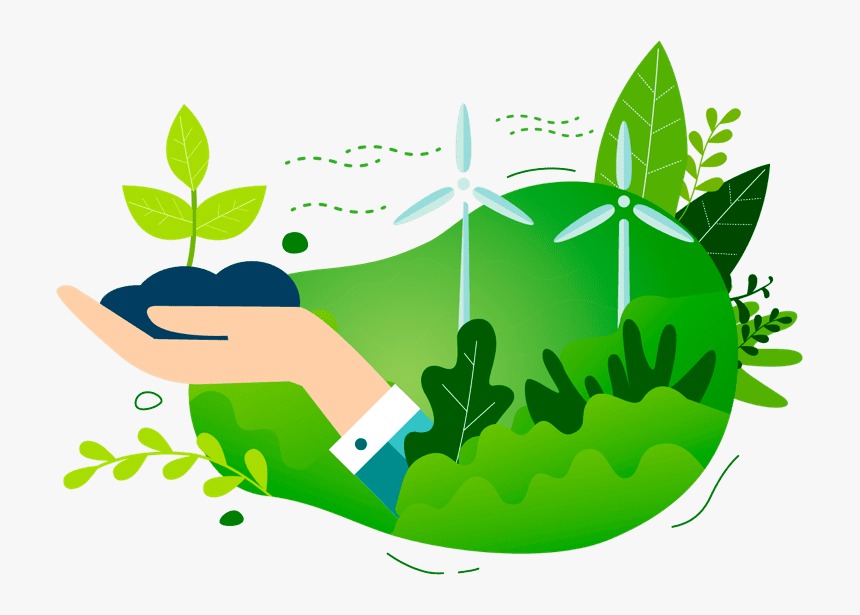Research Objectives:
This research delves into the synergy between the concepts of sustainability and resilience and their necessity across various aspects of human life.
Keywords:
Sustainability, Resilience, Adaptive governance, Circular economy, social cohesion
Bio
Dr. Rajkumar M. Kolhe’s journey from adversity to educational eminence is a testament to his resilience and dedication. Founder President of Jahnvis Multi Foundation, he established Vande Mataram Degree College and Jana Gana Mana School, providing quality education to underprivileged children in Nagpur’s rural areas. Additionally, he founded Jana Gana Mana Vidyamandir and Jr. College in Dombivli West and Jana Gana Mana Convent School Dawasa. With a Ph.D., NET, B.Ed., and multiple postgraduate degrees, including M.A. in English, Hindi, and History, his academic prowess forms the foundation of his career. Prin. Dr. Kolhe conducted over 200 webinars during lockdown, benefiting thousands, further cementing his legacy as a visionary educator and philanthropist.
Abstract
In today’s rapidly evolving world, integrating sustainability and resilience is crucial. This research delves into the synergy between these concepts and their necessity across various aspects of human life. Sustainability involves meeting current needs without jeopardising future generations, encompassing environmental, social, and economic dimensions for a balanced coexistence with nature. Resilience is the capacity to recover from adversity and adapt to changes, ensuring systems and communities remain functional despite challenges. The increasing threats of climate change, biodiversity loss, resource depletion, and socio-economic inequalities highlight the need for combined sustainability and resilience approaches. Effective integration recognises the interconnectedness of ecological, social, and economic systems, necessitating holistic thinking and long-term strategies. Key strategies include: 1) adopting adaptive governance for collaborative and inclusive decision-making; 2) investing in renewable energy, green infrastructure, and circular economies to minimise environmental impact and enhance resource efficiency; 3) strengthening social cohesion and equity to build social capital and collective resilience; 4) protecting ecosystem services and biodiversity to maintain natural capital; and 5) fostering innovation, research, and education for adaptive solutions. This integration fosters inclusive, equitable, and resilient communities, capable of navigating the uncertainties of a changing world. Collective action, transformative leadership, and continuous learning are essential to building a sustainable and resilient future for all.
Introduction
In today’s rapidly evolving global landscape, the concepts of sustainability and resilience have become central to addressing the multifaceted challenges we face. As the world grapples with environmental degradation, climate change, economic instability, and social inequities, integrating sustainability and resilience into our systems and practices is no longer optional—it is imperative.
Understanding Sustainability And Resilience
Sustainability refers to the ability to meet present needs without compromising the ability of future generations to meet theirs. It encompasses the preservation of natural resources, the promotion of social equity, and the maintenance of economic stability. On the other hand, resilience is the capacity of a system—be it ecological, social, or financial— to absorb shocks, adapt to changing conditions, and continue to function effectively. In the context of a rapidly changing world, sustainability and resilience are crucial pillars for ensuring the longevity and well-being of human societies and the natural environment. Although closely related, they address different aspects of how ecological, social, or economic systems can endure and thrive over time.
Sustainability
Sustainability is the practice of meeting the needs of the present without compromising the ability of future generations to meet their own needs. It is a holistic approach that considers the long-term impacts of our actions on the environment, society, and the economy. Sustainability is often broken down into three interconnected dimensions:
1.Environmental Sustainability
Creating a supportive and in This involves the responsible management of natural resources, such as water, energy, and raw materials, to prevent depletion and degradation. It also encompasses efforts to reduce pollution, conserve biodiversity, and combat climate change.
2. Social Sustainability:
This dimension focuses on maintaining and improving the well-being of current and future generations. It includes promoting social equity, ensuring access to essential services like education and healthcare, and fostering inclusive communities.
3. Economic Sustainability:
Economic sustainability aims to create systems that support long-term economic growth without negatively impacting environmental and social aspects. This includes responsible business practices, fair trade, and the creation of jobs that contribute to a thriving economy while minimizing ecological footprints.
Resilience
Resilience refers to the capacity of a system to withstand and recover from adverse conditions, such as natural disasters, economic shocks, or social upheavals. A resilient system can adapt to change, absorb disruptions, and continue to function effectively. Resilience can be viewed through various lenses:
1. Ecological Resilience:
This is the ability of natural ecosystems to recover from disturbances, such as wildfires, floods, or climate change. Healthy, biodiverse ecosystems tend to be more resilient, as they can adapt to changes and regenerate after disruptions.
2. Social Resilience:
Social resilience refers to the capacity of communities and societies to cope with and recover from challenges such as economic downturns, political instability, or public health crises. Strong social networks, cultural traditions, and effective governance contribute to social resilience.
3. Economic Resilience:
Economic resilience is the ability of an economy to withstand shocks, such as financial crises or changes in global trade patterns and recover quickly. This includes diversifying economic activities, maintaining robust financial systems, and ensuring social safety nets for vulnerable populations.
Interrelation Between Sustainability And Resilience
While sustainability is about creating systems that are viable in the long term, resilience focuses on the ability to adapt and recover in the short term. However, these concepts are deeply interconnected. For example, a community that practices sustainable agriculture not only preserves its resources for future use but also enhances its resilience against food shortages caused by climate change.
Moreover, sustainable practices often build resilience by reducing vulnerability to shocks. For instance, renewable energy systems, such as solar and wind power, contribute to environmental sustainability by reducing carbon emissions while also enhancing resilience by providing decentralized, reliable energy sources that are less prone to disruptions.
Challenges In A Changing World
The world today is in a state of flux, characterised by rapid technological advancements, climate change, urbanisation, and global interconnectivity. These changes present significant challenges to achieving sustainability and resilience. For example, climate change poses a threat to food security, water availability, and human health, necessitating the development of resilient agricultural practices and sustainable water management strategies.
The 21st century presents a complex array of challenges that underscore the need for integrating sustainability and resilience into our global, national, and local systems. These challenges are multifaceted and often interconnected, making it imperative for governments, businesses, communities, and individuals to adapt and innovate in order to secure a viable future.
1. Climate Change
Perhaps the most pressing challenge of our time, climate change is reshaping ecosystems, economies, and societies. Rising global temperatures, melting polar ice, and increasingly severe weather events—such as hurricanes, droughts, and floods—threaten food security, water availability, and human health. Climate change exacerbates existing vulnerabilities, particularly in developing countries and among marginalised communities, and necessitates the urgent adoption of sustainable and resilient practices.
2. Environmental Degradation
Human activities, including deforestation, pollution, and overexploitation of natural resources, have led to significant environmental degradation. The loss of biodiversity, soil erosion, and the depletion of freshwater sources threaten the natural systems upon which life depends. This environmental degradation reduces the planet’s capacity to provide essential services, such as clean air and water, fertile soil for agriculture, and a stable climate, thereby compromising long-term sustainability and resilience.
3. Economic Instability
Globalisation has created an interconnected world economy, where economic crises in one region can have ripple effects across the globe. Financial instability, trade imbalances, and economic inequality are persistent challenges that can undermine both sustainability and resilience. The COVID-19 pandemic, for example, exposed the vulnerabilities of global supply chains and the unequal distribution of resources, leading to economic disruptions that have had lasting impacts on livelihoods and social cohesion.
4. Urbanisation
Rapid urbanisation is transforming societies and economies, with more than half of the world’s population now living in cities. While urban areas can drive economic growth and innovation, they also pose significant challenges, such as overcrowding, inadequate infrastructure, and increased demand for energy and resources. Urbanisation often leads to the expansion of informal settlements, where residents are particularly vulnerable to environmental hazards and lack access to basic services, undermining both sustainability and resilience.
5. Social Inequity And Inequality
Social inequities—based on factors such as race, gender, income, and geography—remain pervasive across the globe. These inequities contribute to disparities in access to resources, opportunities, and decision-making power. For example, marginalised communities often bear the brunt of environmental degradation and climate change impacts, while having the least capacity to adapt. Addressing social inequity is essential to building resilient and sustainable societies that can withstand and recover from various shocks.
6. Technological Disruption
While technology offers solutions for many of the world’s challenges, it also introduces new risks. The rapid pace of technological change, including the rise of artificial intelligence, automation, and digital platforms, can lead to job displacement, privacy concerns, and cybersecurity threats. Moreover, the digital divide—wherein some populations have limited access to technology—can exacerbate existing inequalities and hinder the ability of communities to adapt to changing circumstances.
7. Political Instability And Conflict
Political instability, often fueled by competition over scarce resources, economic disparities, and social tensions, poses significant challenges to sustainability and resilience. Conflicts can disrupt social cohesion, displace populations, and destroy infrastructure, making it difficult to achieve sustainable development goals. Additionally, political instability can hinder effective governance, making it challenging to implement policies that promote long-term sustainability and resilience.
8. Health Crises
Global health crises, such as the COVID-19 pandemic, have underscored the vulnerabilities of public health systems and the interdependence of global communities. The spread of infectious diseases can have wide-ranging impacts on economies, societies, and the environment, disrupting education, livelihoods, and social services. Building resilient health systems that can respond to and recover from such crises is essential for sustainable development.
Addressing The Challenges
Addressing these challenges requires a holistic and integrated approach. Policies and practices must be adaptive and inclusive, prioritising the needs of the most vulnerable while fostering innovation and collaboration across sectors. By embedding sustainability and resilience into the core of decision-making processes, societies can better navigate the uncertainties of a changing world and create a more equitable and sustainable future for all.
To effectively address the complex challenges of a changing world, it is essential to integrate sustainability and resilience across all levels of society—from local communities to global institutions. This integration requires a multi-faceted approach, involving adaptive governance, community engagement, technological innovation, and education. Below are key strategies for achieving this integration.
Strategies For Integration
1. Adaptive Governance:
Governments and institutions must adopt flexible, adaptive policies that can respond to emerging challenges. This includes incorporating sustainability and resilience principles into urban planning, disaster management, and economic development. Adaptive governance involves the creation of flexible, responsive policies that can evolve in response to changing conditions.
This approach is crucial for managing the uncertainties of climate change, economic shifts, and social transformations.
- Policy Integration: Sustainability and resilience should be embedded in all levels of policymaking, from local urban planning to national economic strategies. This involves integrating environmental, social, and economic considerations into decision-making processes.
- Collaborative Governance: Governments should engage multiple stakeholders, including businesses, civil society, and indigenous groups, in the policy-making process. This collaboration ensures that policies are inclusive and address the needs of diverse communities.
- Risk Management: Governments should adopt proactive risk management strategies that anticipate and mitigate potential disruptions. This includes developing early warning systems, disaster preparedness plans, and climate adaptation measures.
2. Community Engagement:
Empowering local communities to participate in decision-making processes ensures that sustainability and resilience initiatives are context-specific and culturally appropriate. Community-based approaches to natural resource management, for example, can enhance resilience by leveraging local knowledge and fostering a sense of ownership.
Communities are at the forefront of both the impacts of and responses to global challenges. Empowering communities to take an active role in sustainability and resilience initiatives is essential for creating effective and context-specific solutions.
Participatory Planning:
Involving community members in planning and decision-making processes ensures that initiatives are grounded in local knowledge and priorities. This can lead to more effective and sustainable outcomes.
- Capacity Building: Providing communities with the tools, knowledge, and resources they need to build resilience is crucial. This includes education and training on sustainable practices, as well as access to financial and technical support.
- Social Cohesion: Strengthening social networks and fostering a sense of community can enhance resilience by enabling collective action and mutual support during times of crisis.
3. Technology And Innovation:
Advancements in technology offer new opportunities to enhance sustainability and resilience. Renewable energy technologies, smart infrastructure, and data-driven decision-making tools can reduce environmental impacts and improve a system’s ability to withstand and recover from disruptions.
Technology plays a pivotal role in advancing sustainability and resilience. By leveraging new technologies, societies can reduce their environmental footprint, enhance their adaptive capacities, and build more resilient infrastructures.
Renewable Energy: Transitioning to renewable energy sources, such as solar, wind, and hydroelectric power, is a critical step toward sustainability. These energy sources are not only environmentally friendly but also enhance energy resilience by reducing dependence on fossil fuels.
- Smart Infrastructure: Investing in smart infrastructure—such as energy-efficient buildings, green transportation systems, and resilient water management systems— can reduce environmental impacts and improve the ability to withstand and recover from disruptions.
- Data-Driven Decision-Making: Utilising big data, artificial intelligence, and predictive analytics can enhance decision-making by providing real-time insights into potential risks and opportunities. These technologies can help optimise resource use, monitor environmental conditions, and improve disaster response efforts.
4. Education And Awareness:
Raising awareness and educating individuals and organisations about the importance of sustainability and resilience is crucial. This includes integrating these concepts into educational curricula and professional training programs to build a workforce that is equipped to tackle future challenges. Education is fundamental to building a culture of sustainability and resilience. By raising awareness and equipping individuals with the necessary skills, societies can foster a more informed and proactive citizenry.
- Curriculum Integration: Sustainability and resilience concepts should be integrated into educational curricula at all levels— from primary schools to universities. This ensures that future generations are equipped with the knowledge and skills needed to address global challenges.
- Public Awareness Campaigns: Governments, NGOs, and the private sector should collaborate on public awareness campaigns that highlight the importance of sustainable practices and resilient behaviours. These campaigns can encourage individuals to adopt more sustainable lifestyles and support resilience-building initiatives in their communities.
- Professional Development: Ongoing training and professional development programs are essential for equipping professionals in all sectors—such as urban planners, engineers, and healthcare workers—with the tools and knowledge they need to integrate sustainability and resilience into their work.
5. Financial Incentives And Support
Achieving sustainability and resilience often requires significant investments, which can be facilitated through targeted financial incentives and support mechanisms.
- Green Financing: Governments and financial institutions should promote green financing options, such as green bonds and sustainability-linked loans, to support projects that contribute to environmental sustainability and social resilience.
- Subsidies and Tax Incentives: Providing subsidies and tax incentives for businesses and individuals who adopt sustainable practices—such as installing renewable energy systems or implementing energy-efficient technologies—can accelerate the transition to a more sustainable and resilient economy.
- Insurance and Risk Transfer Mechanisms: Developing innovative insurance products and risk transfer mechanisms can help communities and businesses manage the financial impacts of climate-related disasters and other shocks. This can include microinsurance for vulnerable populations and catastrophe bonds for largescale risk management.
Conclusion
In conclusion, the integration of sustainability and resilience is essential for navigating the complexities of our changing world. Integrating sustainability and resilience is not just a goal; it is a necessity in our rapidly changing world. By adopting adaptive governance, engaging communities, leveraging technology, enhancing education, and providing financial incentives, we can build systems that are both sustainable and resilient and we can create systems that not only survive but thrive in the face of uncertainty. These strategies not only address current challenges but also prepare us to navigate future uncertainties, ensuring a thriving, equitable, and sustainable world for generations to come. Our collective efforts today will determine the well-being of future generations and the health of our planet.



